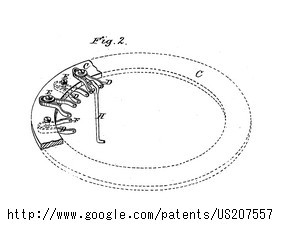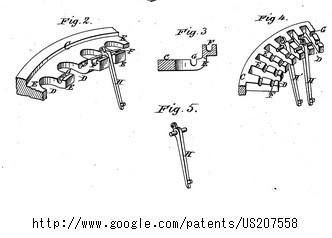

In Figure 2 of the drawings a modified arrangement of the keyboard is illustrated, the vertical rows of the keys at the right and left hand sides of the vertical center line of the keyboard being inch'red in a direction to ward each other.
This arrangement of the keyboard has been found desirable in order that each hand of the operator would move in a< natural direction toward each other as the fingers reach for the keys of the uppermost rows of the keyboard. If desired, the gap which it will be seen occurs at the lower portion of the center of the keyboard, may be .filled in by placing some of the less frequently used keys therein, such as for instance the tabulator keys, the back spacer or the like.








